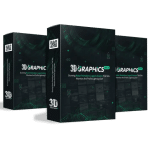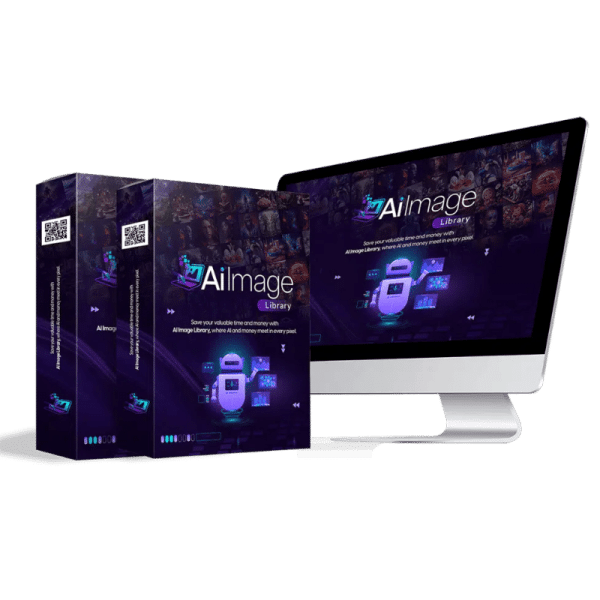Description
Unleash Your Creative Possibilities with 3000 Ai Images Collection
Dive into a treasure trove of visual wonders! This unparalleled collection boasts 3000 meticulously crafted AI-generated images spanning 10 captivating niches.
- Animals: Bring life to your projects with realistic and imaginative animal illustrations.
- Year-End Festivities: Capture holiday magic with vibrant festive imagery.
- And More! Explore diverse themes to ignite your creative fire.
Ideal for:
- Web designers: Elevate your website’s visual appeal.
- Social media gurus: Spice up your posts with eye-catching graphics.
- Marketers: Craft compelling campaigns that stand out.
- Artists: Find inspiration and fuel your next masterpiece.
This extraordinary image pack empowers you to express yourself with boundless creativity.
Option 2: Focusing on Quality & Versatility
Elevate Your Projects with 3000 High-Quality AI Images
Experience the power of AI-generated artistry! This meticulously curated collection features 3000 stunning images crafted across 10 popular niches.
- Animals: From majestic creatures to playful pets, find the perfect animal illustration.
- Year-End Festivities: Embrace the magic of the season with festive and heartwarming images.
- And More! Discover a wealth of diverse visuals to suit your every need.
This versatile image collection is perfect for:
- Enhancing your online presence
- Creating engaging marketing materials
- Adding a unique touch to presentations
- And countless other creative endeavors!
Invest in a visual toolkit that will inspire and elevate your work.
Option 3: Brief and Impactful
Transform Your Visual Storytelling with 3000 Captivating AI Images
This extraordinary image collection puts the power of AI-generated visuals at your fingertips. Explore 3000 stunning images across 10 in-demand niches, including:
- Animals
- Year-End Festivities
- And much more!
Unlock endless creative possibilities and bring your ideas to life with this must-have visual resource.
3000 AI Images Collection: A Deep Dive into the Future of Creativity and Technology
In the ever-evolving world of artificial intelligence (AI), the intersection of technology and art is paving new pathways for creativity and innovation. Among the most fascinating applications of AI in creative fields is the creation of images. One of the most remarkable advancements is the collection of AI-generated images, which has grown into a vast, diverse, and increasingly sophisticated genre. This collection is more than just a group of visually stunning artworks; it represents a profound shift in how we think about creation, ownership, and the role of machines in artistic expression. The concept of a “3000 AI Images Collection” encapsulates the pinnacle of this revolution, offering a glimpse into the future of visual art.
The Role of AI in Image Creation
Artificial intelligence, particularly in the form of deep learning and neural networks, has made great strides in generating images. By training on vast datasets of existing visual content, AI systems learn the intricacies of styles, colors, compositions, and patterns, enabling them to produce images that mimic or even surpass traditional artistic methods. From photo-realistic portraits to abstract designs, AI can produce a range of visual content with incredible precision.
In the case of a collection like the “3000 AI Images Collection,” the sheer volume of images allows for the exploration of numerous styles, themes, and artistic techniques. These images are generated by sophisticated AI models like Generative Adversarial Networks (GANs), Convolutional Neural Networks (CNNs), and other advanced machine learning algorithms. Each image is a result of complex calculations, patterns, and algorithms that go far beyond what a human artist might traditionally create.
The collection spans various categories, including digital portraits, surreal landscapes, futuristic architecture, conceptual art, abstract imagery, and even hyper-realistic simulations of the natural world. AI models are trained on millions of images, learning the visual language and nuances that define various genres and aesthetic preferences. As a result, AI-generated images can reflect and even challenge human conceptions of beauty, form, and meaning.
The Evolution of AI-Generated Art
AI-generated art has come a long way since its inception. Early experiments in the field involved simple rule-based systems that could generate rudimentary images. However, as machine learning algorithms evolved, so did the quality and complexity of AI-generated images. In the past decade, generative models like GANs have made it possible to produce images that are often indistinguishable from those created by humans.
The breakthrough moment came when AI models like DeepDream and StyleGAN demonstrated the potential of AI to generate high-quality, diverse images. DeepDream, for example, created dream-like, psychedelic images by enhancing certain patterns and features within a neural network. Meanwhile, StyleGAN opened up new possibilities by generating highly realistic human faces, landscapes, and abstract designs.
These advancements have led to the creation of massive collections of AI-generated images. With 3000 images in a single collection, the scope for creativity becomes almost limitless. The diversity within the collection showcases how AI can reinterpret familiar visual motifs, blend disparate styles, and invent entirely new artistic concepts.
The Technology Behind AI Image Generation
To understand the magic behind AI image generation, it’s important to delve into the technology that powers it. The backbone of AI image generation is deep learning, a subfield of machine learning that uses neural networks to model and solve complex problems. Deep learning models are inspired by the structure of the human brain, with layers of interconnected nodes (neurons) that process information.
Generative models like GANs consist of two primary components: the generator and the discriminator. The generator is responsible for creating images, while the discriminator evaluates them. The two work in tandem, with the generator continuously improving its output based on feedback from the discriminator. Over time, this iterative process allows the generator to produce highly realistic images.
StyleGAN, developed by NVIDIA, takes this concept a step further by enabling the generation of images that maintain a high degree of realism while allowing for control over specific aspects of the image, such as facial expressions, background, and lighting. This ability to control specific features of the generated images makes StyleGAN particularly powerful for creating diverse collections like the 3000 AI Images Collection.
Other techniques, such as Convolutional Neural Networks (CNNs) and Variational Autoencoders (VAEs), are also used in AI image generation. These models are particularly adept at capturing and replicating the underlying structure and patterns found in real-world images, allowing them to generate high-quality, coherent visuals.
The Role of Data in AI Image Creation
One of the key factors that determine the quality and diversity of AI-generated images is the dataset used to train the model. In the case of the 3000 AI Images Collection, the dataset would likely consist of millions of images across a wide range of categories, including portraits, landscapes, architecture, animals, abstract art, and more. These images serve as the “training ground” for the AI, allowing it to learn the visual elements that define each category.
However, the quality of the dataset is equally important. A well-curated dataset will allow the AI to generate images with a high degree of detail, coherence, and visual appeal. On the other hand, a poorly curated dataset can lead to incoherent or low-quality images. This is why many AI artists and technologists spend considerable time and effort selecting and curating the data that will be used to train their models.
The importance of data diversity cannot be overstated. A dataset that includes a wide range of visual styles, cultural influences, and historical periods allows the AI to generate images that reflect a broad spectrum of human experience. This diversity is essential for creating a collection of 3000 AI images that are varied, innovative, and engaging.
Artistic Innovation in the Age of AI
One of the most exciting aspects of the 3000 AI Images Collection is its potential to push the boundaries of artistic expression. AI has the ability to combine styles, techniques, and influences in ways that human artists might never have conceived. By blending elements from different artistic movements, genres, and cultures, AI can create entirely new visual languages that challenge traditional notions of art.
For instance, AI can take the intricate patterns of Islamic art and combine them with the surreal landscapes of Salvador Dalí, creating new hybrid forms that blur the lines between tradition and innovation. Similarly, AI can synthesize the clean lines of modernism with the chaos of abstract expressionism, resulting in visually striking works that resonate with contemporary audiences.
In the context of a collection like the 3000 AI Images Collection, this innovative approach allows for the creation of images that are both familiar and new, evoking a sense of nostalgia while simultaneously pushing the envelope of what is possible in visual art.
The Ethical Implications of AI Art
As AI-generated art becomes more mainstream, it raises important ethical questions about authorship, ownership, and the value of human creativity. In the case of the 3000 AI Images Collection, one might ask: who owns the rights to the images? Is it the creator of the AI model, the curator of the dataset, or the machine itself?
Some critics argue that AI-generated art lacks the “soul” of human-created art, as it is the product of algorithms rather than human experience and emotion. Others argue that AI is merely a tool, and that the true creativity lies in how humans use it to generate new forms of expression. As the lines between human and machine-generated art continue to blur, these debates will only intensify.
Another ethical concern is the potential for AI-generated art to displace human artists. While AI can create images quickly and at scale, it does not replace the emotional depth, cultural context, and personal narrative that human artists bring to their work. The challenge moving forward will be finding a balance between the possibilities offered by AI and the value of human creativity.
The Future of AI Art and the 3000 AI Images Collection
Looking ahead, the potential for AI-generated images is limitless. As AI models continue to evolve and improve, we can expect even more sophisticated and dynamic collections of images. The 3000 AI Images Collection may one day be seen as a precursor to even larger and more complex bodies of work, where the boundaries between art, technology, and humanity become increasingly fluid.
One area of innovation is the use of AI in interactive and immersive experiences. Future AI image collections could be integrated into virtual reality (VR) or augmented reality (AR) environments, allowing viewers to experience the images in new and dynamic ways. Imagine walking through a virtual gallery where the AI-generated images change and evolve based on your interactions or emotions.
Moreover, as AI becomes more accessible, we may see a democratization of art, where anyone with the right tools can create their own AI-generated images. This opens up exciting possibilities for collaboration, self-expression, and the exploration of new creative forms.
Conclusion
The 3000 AI Images Collection is a testament to the power of artificial intelligence to transform the world of art and creativity. By harnessing the capabilities of advanced machine learning algorithms, AI can produce images that are diverse, innovative, and thought-provoking. As the technology behind AI image generation continues to evolve, we can expect even more exciting developments in the world of AI art. The future of creativity lies at the intersection of human ingenuity and machine intelligence, and the 3000 AI Images Collection is just the beginning of this extraordinary journey.










Reviews
There are no reviews yet.